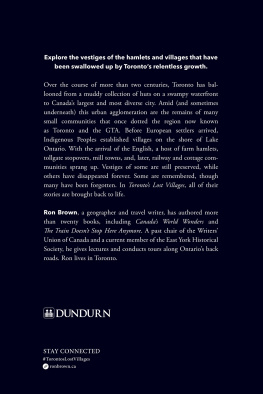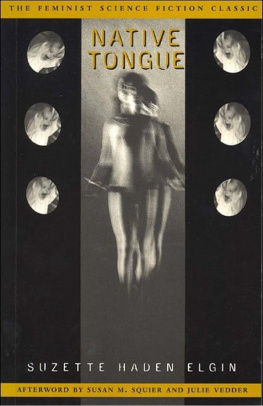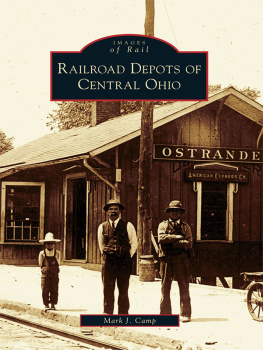Vanished Villages of
ELGIN
Jennifer Grainger

Vanished Villages of
ELGIN
Copyright 2008 Jennifer Grainger
All rights reserved. No part of this publication may be reproduced, stored in a retrieval system, or transmitted in any form or by any means, electronic, mechanic, photocopying or otherwise (except for brief passages for purposes of review) without the prior permission of Dundurn Press. Permission to photocopy should be requested from Access Copyright.
Published by Natural Heritage Books
A Member of The Dundurn Group
3 Church Street, Suite 500
Toronto, Ontario, M5E 1M2, Canada
www.dundurn.com
Library and Archives Canada Cataloguing in Publication
Grainger, Jennifer
Vanished villages of Elgin / Jennifer Grainger.
Includes bibliographical references and index.
ISBN 978-1-55002-812-6
1. Elgin (Ont. : County)--History. I. Title.
FC3095.E44Z58 2008 971.325 C2008-900236-9
1 2 3 4 5 12 11 10 09 08
Front Cover: top left, Mill stones, Springwater Conservation Area; right, Monument to the Talbot Settlement; bottom, the Harding Mill at Selbourne, early 1900s, courtesy of Elgin County Archives C3Sh6B1F18.
Back Cover: top right, a postcard shows the harbour at Port Bruce, c. 1909, courtesy of Elgin County Archives C6Sh6B4F1#39; bottom left, Campbellton General Store and Post Office, c. 1900, courtesy of Archives of Ontario F2178-1-0-17.
All photos in the text were taken by the author unless otherwise credited.
Cover design by Erin Mallory
Text design by Jennifer Scott
Edited by Jane Gibson
Copyedited by John Parry
Printed and bound in Canada by Transcontinental
Care has been taken to trace the ownership of copyright material used in this book. The author and the publisher welcome any information enabling them to rectify any references or credits in subsequent editions.
J. Kirk Howard, President

We acknowledge the support of the Canada Council for the Arts and the Ontario Arts Council for our publishing program. We also acknowledge the financial support of the Government of Canada through the Book Publishing Industry Development Program and The Association for the Export of Canadian Books and the Government of Canada through the Ontario Book Publishers Tax Credit Program and the Ontario Media Development Corporation.
Dundurn Press
3 Church Street, Suite 500
Toronto, Ontario, Canada
M5E 1M2
Gazelle Book Services Limited
White Cross Mills
High Town, Lancaster, England
LA1 4XS
Dundurn Press
2250 Military Road
Tonawanda, NY
U.S.A. 14150
CONTENTS
Cowal
ACKNOWLEDGEMENTS
WHEN I RESEARCH A BOOK, I am always grateful to the many people who assist me along the way. This volume could not have been written without the help of the staff at the London Room at the Central Public Library in London, the George Thorman Room at the St. Thomas Public Library, the Elgin County Archives, the Archives of Ontario, and the Archives and Research Collections Centre, University of Western Ontario. Many thanks also to Catherine Elliot Shaw of the McIntosh Gallery at Western for her assistance in providing the copy of the portrait of Colonel Thomas Talbot, and to Mike Baker of the Elgin County Museum for help with the picture of Colonel Mahlon Burwell.
Many other people provided me with stories and photos for this book: Lee and Audrey Ball (Griffins or Froggetts Corners), Don Carroll (Campbellton and Largie), Margaret Carroll (Middlemarch), Richard and Mona Cline (West Magdala), Tony Csinos (Estherville), Glen Curnoe (Selbourne), Josephine Froggett (Griffins or Froggetts Corners), Jean Griffin (Dexter), Evelina Hartemink (Crossley-Hunter), Ruth Howard (Crinan), Harley and Nancy Lashbrook (Aldborough Township communities), Minnie Livingstone (Crinan), Ruby McGugan (Coynes Corners), John McIntyre (Crinan), Duncan McKillop (Killerby), Catherine McMillan (Kintyre), Norman McWilliam (Campbellton), Kathleen Oatman (Glencolin), Norma Schneckenburger (Churchville), Harris Teall (Griffins Corners), William Vanidour (Pleasant Valley), and Barbara and Al Willey (Churchville).
Finally, thanks to my parents, Bob and Norma Grainger, for moral support and photo expeditions.
Of course, while every effort has been made to ensure accuracy of information throughout, the responsibility for any errors rests with me.
INTRODUCTION
THE SUCCESS OF Vanished Villages of Middlesex has prompted me to write about vanished villages in Elgin. Just like Middlesex, Elgin County had many small communities scattered across its landscape, and just as in Middlesex, many have faded away.
The typical crossroads hamlets of nineteenth-century Elgin included a general store and post office, blacksmith, church, and school. There might also have been a mill or two, carriage-making shop, hotel, and shoemaker. In the days when most of our population was rural, small villages such as these were important centres of support for the scattered homesteads. Roads were poor, and travel by horse and buggy was slow. Pioneers couldnt travel far to buy their groceries, mail a letter, have a horse shod, worship, or send their children to school. These hamlets were also places where neighbours could meet to chat about the weather, discuss politics, or just have a friendly gossip.
Several factors contributed to the disappearance of these tiny communities. One was the general trend towards urban living over the last century and a half. Young people moved to the city to attend school and find work, and farming became not as common an occupation as in times past. A second factor was the building of the railways, which contributed to the growth of some villages and the decline of others as businesses would shift location, abandoning one place if necessary in order to be close to the rail lines. A third factor was the rise of the automobile, which led to faster travel on better roads and lessened the need for so many small service centres. In some cases, natural disasters such as floods and economic downturns caused by the decline of certain industries such as lumbering contributed to the demise of many of Elgins villages. Also, just as the city of London absorbed many surrounding villages through annexation over the years, Elgins county seat, St. Thomas, acquired one of its neighbouring centres.
Elgin County was originally part of the Western District of (Upper) Canada, which was divided in 1792 into four counties Norfolk, Suffolk, Essex, and Kent. Bayham, Malahide, and South Dorchester townships were initially part of Norfolk County, while Yarmouth, Southwold, Dunwich, and Aldborough townships were in Suffolk County. It was Lieutenant-Governor John Graves Simcoe and his staff who named many of the townships, several of them after towns in Suffolk (county), England. The idea seems to have been to reproduce the geography of England as much as possible in Upper Canada. Suffolk County was short-lived, however, as was the Western District. In 1798 the Western District was partitioned into several new territories, including the London District, which was composed of the counties of Norfolk, Middlesex, and Oxford. Today this land mass is divided into Elgin, Middlesex, Oxford, Norfolk, Huron, and Bruce counties. The county of Middlesex consisted of the townships of London, Westminster, Dorchester, Delaware, Yarmouth, Southwold, Dunwich, and Aldborough. It was not until 1837 that the townships of Bayham and Malahide became part of Middlesex. Finally, in August 1851, the Territorial Division Act created Elgin County as we know it today. Dorchester Township was at that time split into north and south, and the southern section was transferred to Elgin. St. Thomas was chosen as the county seat because of its central location.












